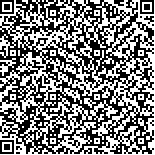| 摘要: |
| 城市的快速发展导致建成区普遍出现
了显著的热岛效应,给居民健康与能源负荷带来
了巨大威胁。在“一年一体检,五年一评估”的
背景下,将热岛效应纳入城市体检评估体系,对
建成区热岛强度及相关气候风险开展常态化监
测与周期性评估,是提升热岛问题精准治理能
力的重要手段。在应对热岛效应复杂时空变化
给精准分析所带来挑战的基础上,本研究依托
卫星遥感数据,探索构建了“干扰控制—变化
诊断—风险评估—规划应对”的体检评估框
架,并对2016—2020年武汉市建成区内部热岛
强度及其时序变化开展了评估。结果显示,武汉
市热岛强度呈现出“内外双高,局部集聚、中间
塌陷”的“U”型圈层式分异结构;2016—2020
年,热岛区域面积及强度均呈现增长趋势,且增
加幅度由中心向外逐渐增大;城市工业园区与
老城区的热岛效应最为显著且处于持续恶化阶段,尤其是人口密集的老城区热暴露风险最高。根据热岛强度及相关热暴露风险的时空演变格
局,研究从总体规划、控制性详细及规划管理层面提出了多层次规划协调的规划建议。本研究对
提高城市热岛效应体检评估的科学性,推动热岛问题精准治理、建设高品质宜居城市具有理论与
实践意义。 |
| 关键词: 热岛效应 体检评估 时空演变 卫星遥感 空间治理 |
| DOI:10.13791/j.cnki.hsfwest.20230606 |
| 分类号: |
| 基金项目:国家自然科学基金青年项目(52308079);湖北省自
然科学基金青年项目(2023AFB080) |
|
| Examination and Evaluation of Urban Heat Island Effect Based on Satellite Remote Sensing: Taking Wuhan as an Example |
|
LIU Huimin,MA Zhengyue,LI Miao,HE Baojie
|
| Abstract: |
| The urbanization process changes the properties of the underlying surface of built-up
areas. High-density construction and population agglomeration further hinders urban ventilation and
increases artificial heat release, resulting in the Urban Heat Island (UHI) effect with the temperature
in cities being significantly higher than that in suburbs. In the context of global climate change, UHI,
combined with extreme heat wave, poses great threats to residents’ health and energy load. How to
mitigate UHI and reduce the related climate risk has become a critical challenge for high-quality
urban development in the new era. Under the background of “examination once a year and evaluation
once every five years”, it is important to improve the ability of urban governance over urban heat
problems by incorporating UHI into the city examination and evaluation system, and carrying out
regular monitoring periodic evaluation of UHI intensity (UHII) and related climate risks in built up areas. It can precisely identify areas with serious urban heat problems and high risk of heat
exposure within built-up areas, capture the variation characteristics of these areas, systematically
coordinate urban planning and management, and carry out spatial governance according to local
conditions, so as to deeply integrate the needs and objectives of UHI mitigation into the territorial
spatial planning system. However, due to the complex interactions between urbanization and multi scale climate change, urban climate change is highly dynamic and uncertain in time. As a result,
UHIIs calculated for different years are not directly comparable, which seriously affects the quality
of relevant planning decisions. Besides, the selection of rural reference for UHII calculation will
further affect the accuracy of time series evaluation. It is urgent to optimize the process and method
of data screening and processing related to UHII calculation, control the interference of external
factors such as climate variations and land use and land cover changes in rural areas to the greatest
extent, strengthen the comparability of data among different years, and improve the accuracy of
UHII variation assessment. In response to the challenges brought by the complex temporal and
spatial changes of UHII to accurate analysis, this study put forward a framework of examining
and evaluating UHII variations covering steps of “Interference controlling-Change diagnosis Risk assessment-Planning response”. It evaluated the intensity and time series changes of internal
heat is湬獡?睤栠敷湩?敨硩瑮爠敗浵敨?桮攠慢瑵?睬慴瘭敵獰?捡潲浥敡??慦湲摯?猠琲爰攱渶朠瑴桯攠渲‰琲栰攠?桳敩慮瑧?桳敡汴灥?晬潩牴?瀠敲潥灭汯整??敳獥灮敳捩楮慧氠汤祡?晡漮爠?癨略氠渊敲牥慳扵汬整?朠牳潨畯灷猠?獨畡捴栬?慦獩?瑳桴敬?攬氠摕效牉汉礠?慮渠摗?捨桡楮氠摣物整湹?楰湲??桥楮杴桳?牡椠猜歕?慳牨敡慰獥?猝甠捳桴?慡獴?瑦桩散?潴汩摯?挠潳湴捲敵獣獴極潲湥?慯湦搠“瑩桮敮?摲攠瀊慡牮瑤洠敯湵瑴?杲愠瑤敯??呬桥椠獨?獩瑧畨摴礬?獬瑯牣楡癬攠摡?瑧潬?業浥灲牡潴癩敯?琠桡敮?猠捭楩敤湤瑬楥映楣捯?敬癡慰汳略愝琮椠潆湲?潭映′田爱戶愠湴?栠攲愰琲‰椬猠汢慯湴摨?整晨晥攠挊瑡??睡栠楡据桤??桮慴獥?瑳桩整潹爠敯瑦椠捨慥污?愠湩摳?灡牮慤挠瑳楨捯慷汥?猠楡杮渠楩普楣捲慥湡捳敩?晧漠牴?灥牮潤洬漠瑡楮湤朠?瑨桥攠?灮牣敲捥楡獳敩?杧漠癡敭牰湬慩湴捵敤?漠晧?畡牤扵慡湬?桹攠愊瑩?灣牲潥扡汳敥浤猠?慲湯摭?扴畨楥氠摣楥湮杴?慲?桴楯朠桴?煥甠慯汵楴瑳祩?汥椮瘠慓扥汣敯?捤楬瑹礬??HII in industrial areas and old urban areas is the most serious with a worsening trend, especially in industrial parks with large building volumes and high-density old urban areas. Thirdly, the risk of
heat exposure is also high in the old urban areas, especially in the Hankou Old concession area and Simen area, where the risk of heat exposure is high with
rising trends, posing a great threat to the daily life and health of local residents. Based on the examination and evaluation results of UHI and the existing
research on the mechanism of thermal environment impact, the study puts forward the planning suggestions of multi-level coordinated planning suggestions
from the aspects of master planning, regulatory planning and planning management for UHI mitigation in Wuhan City. At the master planning level, it is
suggested to adhere to the multi-center urban development mode, optimize the urban spatial pattern, strengthen the conservation of ecological green wedges
such as Houguan Lake and Qingling Lake, and optimize the construction of corresponding ventilation corridors. At the regulatory planning level, strengthen
green construction, promote industrial transformation and upgrading and the gradual renewal of old residential areas. As for areas with limited space
for urban form transformation such as industrial parks and urban core functional areas, it is recommended to increase roof greening and use high albedo
paving materials to cool the areas down. At the planning management level, establish the high temperature monitoring and early warning mechanism, make
emergency pla����������������������������������������������������������������������������������������������������������������������������������������������������������������������������������������������������������������������������������������������������������������������������������������������������������������������������������������������������������������������������������������������������������������������������������������������������������������� |
| Key words: Heat Island Effect Examination and Evaluation Spatial and Temporal Variation Satellite Remote Sensing Spatial Governance |


